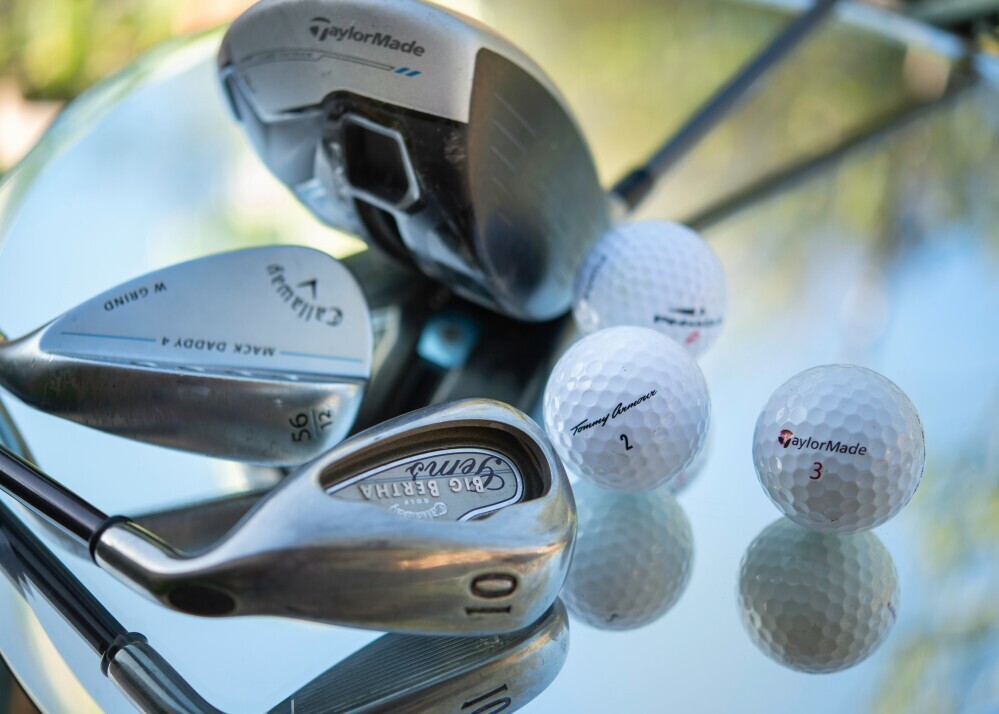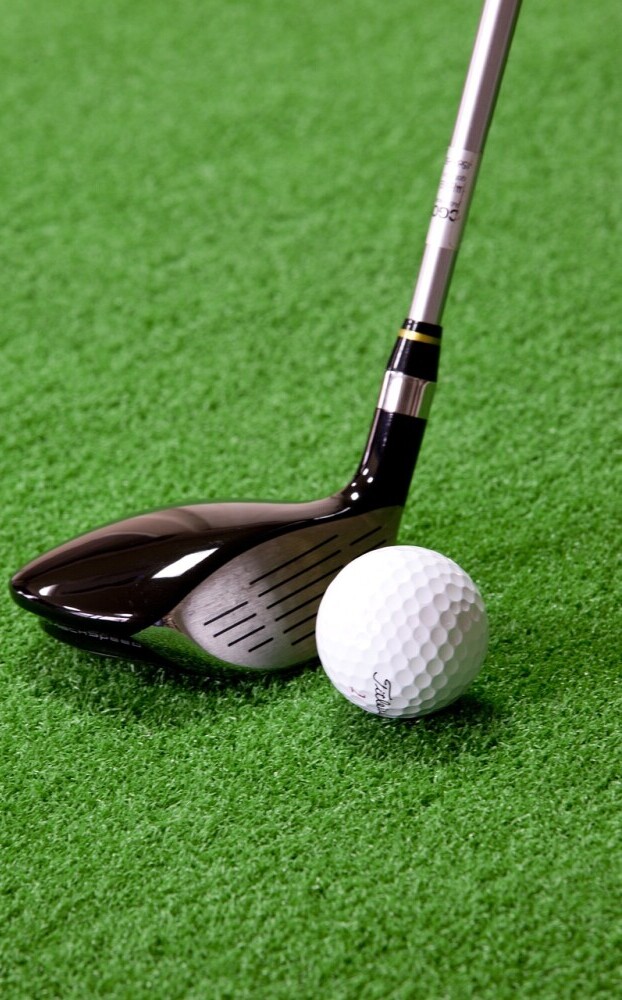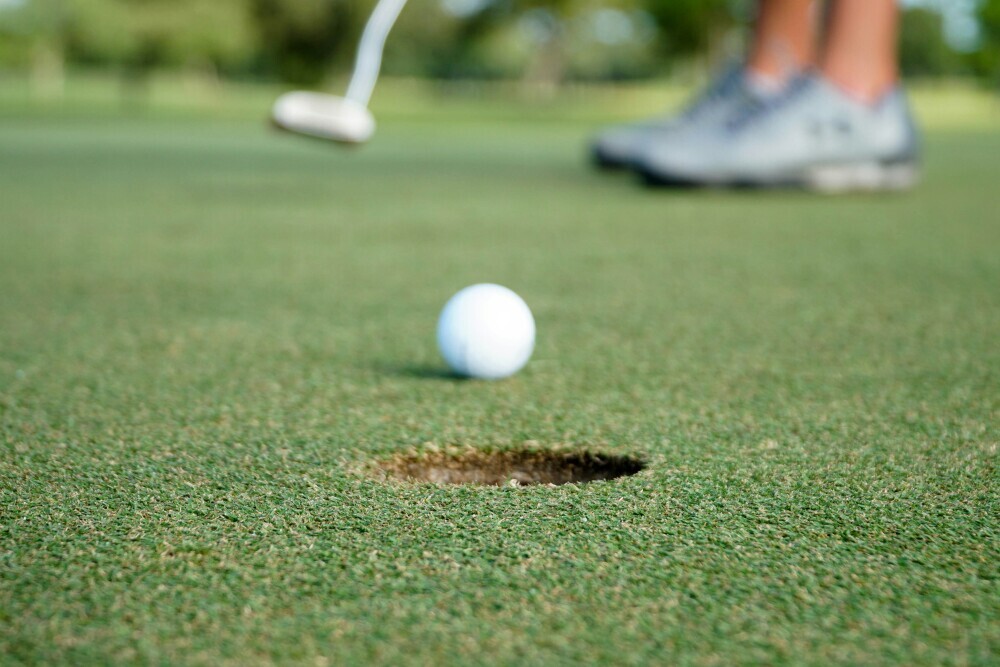How To Know What Golf Club To Use


Fore! Quick note: a few links here are affiliate links. If you snag gear through them, I earn a small commission — no extra strokes added to your game.
Golf clubs aren’t just some fancy sticks; each one has its own unique role. From drivers to putters, knowing what each club does helps make smarter shots and lowers your score. To be a good golfer you will want to know which club to use in every situation you find yourself. Let’s break it down, golf viking style.
Woods are your go-to for those long-distance shots. They have large heads and long shafts, perfect for teeing off or those long fairway shots. Don’t let the name fool you; modern woods are mostly made of metal. These you will want to familiarize yourself with, because they will be a crucial part of your golf game. Hitting well with your driver woods off the tee can set you up for success on the rest of the hole.
Irons are the versatile multi-tools of golf. Numbered from 1 to 9, they cover a range of distances and lofts. The lower-numbered irons (like 3, 4) go further and have less loft, while higher numbers (like 8, 9) offer more loft and control for shorter, precise shots. Generally you will use irons while you’re on the fairway trying to approach the green. The distance from the whole and how will you use your clubs will determine what you will need to use. Irons have a big range, so get to know your irons well because you don’t want to get a 2 mixed up with a 9.
Wedges are your magic-makers for short game and trickier shots. Types like pitching wedges, sand wedges, and lob wedges help you get out of bunkers and rough patches with ease. They offer high lofts, allowing for more controlled and accurate shots. Wedges are designed to hit the ball high into the air and land it softly onto the green. You will mostly use these when you are trying to shoot your ball onto the green, but there may be occasions where you may need a wedge to hit your ball over an obstacle. To learn more about the types of wedges, click here.
Putters are your finishing touch. When you’re on the green, a putter helps you roll the ball into the hole. There are various styles—blade, mallet—and choosing one is all about personal feel. This is where finesse beats power. There is a lot of strategy involved in putting, and every course can present challenges on the greens. To learn more about putting, click here.
Matching the right club to the situation is key. Each club is designed for specific scenarios, and knowing this can turn you from a good player into a great one. Basics nailed down, the real fun begins when you start mixing clubs to suit your unique style. So what’s the best way to determine what club you will need?
Choosing the right club starts with understanding your options. Check out our guide on the different types of drivers in golf to see how each driver can affect your tee shots.
Ready to level up your golf game? Click here.

Personalizing Your Game: Assessing Your Range and Skill Level
Figuring out which club to use starts with knowing your own game. The best club for you depends on how far you can hit each type. Grab a rangefinder or use yard markers to measure your average distance with each club. This helps you pick the right club when you’re on the course. Make a trip to the driving range and test out your range with each club in your bag. Hit with each club several times so you can get a better sense of average distance with that club.
Next, assess your skill level. Not everyone can hit a 3-iron consistently. If you’re still working on accuracy, it might be better to stick with higher-numbered irons or hybrids that are easier to control. No shame in playing to your strengths! Almost every golfer has a club or clubs that they don’t use because they don’t feel confident with them, so there may be certain clubs that you choose to not use on the course.
Keep tabs on your performance. Use a golf app to track your shots or a notebook to jot down your distances and accuracy. Over time, you’ll spot patterns and can make better decisions on which clubs to use in different situations. The more you use your clubs, the better you will be able to assess when you need each one.
Remember you can also adjust your club choices based on how you’re playing that day. If your driver’s acting up, switch to a 3-wood or a hybrid off the tee. Consistency is key, but being flexible can save you strokes. Sometimes a certain club may feel off or it may not serve you anymore. It’s all up to you to decide which clubs you feel most comfortable with.
Forgiveness and performance matter for every club. Check out our post on the most forgiving drivers in golf to see which clubs help minimize mishits.

Environmental and Situational Factors in Club Selection
Course layout and conditions can majorly impact your club choice. If you’re facing a narrow fairway, it might be safer to opt for a club that offers more control, like an iron or hybrid, instead of a risky driver shot. Understanding the terrain helps you tailor your strategy.
Weather can be a game-changer. Wind, for instance, can either carry your ball further or push it off course. On windy days, opting for a lower-lofted club can help keep your ball down and maintain accuracy. For more on playing in the wind, click here. Similarly, temperature affects how far your ball will travel—colder weather shortens distances. So your strategy may change because of the environment you are playing.
Reading the lie of the ball is crucial. A ball buried deep in the rough requires a different approach than one sitting pretty on the fairway. For tricky lies, a wedge with a higher loft might be your best bet to escape trouble. Understanding how different lies affect your shot can help you make smarter choices. A wedge may help you out of a tougher lie even though it may not get you as close to the hole as another club. Use the clubs in a manner of what they are designed for.
Real-life examples make this clearer. Imagine you’re 150 yards from the green but facing a strong headwind. Your usual 7-iron might not cut it here, so you might club up to a 6-iron to counteract the wind. Similarly, if you’re in a bunker, a sand wedge is usually your friend. Adapting to these environmental factors can save you strokes. Let’s talk about how to get the most out of your club selection.
If you want to optimize your overall set, our reviews of the top 10 iron sets for beginners can help you see how all clubs fit together for a balanced bag.

Strategic Club Selection: Maximizing Your Performance
Choosing the right club isn’t just about distance and conditions—it’s also about strategy. Sometimes, it’s smarter to play safe than risk a big mistake. Risk and reward analysis helps you decide if it’s worth going for that long drive or if laying up is the smarter move.
Good course management is key. Look at the hole’s layout: Where are bunkers, water hazards, and rough areas? Plan your shots to avoid trouble spots. Even a well-placed iron shot can set you up better for your next swing than a risky wood shot. Know when to dial back in order to get yourself a better shot.
Being decisive under pressure is essential. Stick to your game plan. Wavering between clubs usually leads to poor shots. If you’re unsure, go with the club you feel most comfortable using. Confidence in your choice can make a big difference to your shot quality. No need to use every club in your golf bag all the time.
Technology can give you an edge too. GPS devices and rangefinders provide accurate distances, making club selection easier. These tools don’t replace your judgment but enhance it by giving you precise info to base your decisions on. There are many apps these days to help you with all aspects of your golf game.
By familiarizing yourself with your clubs and assessing your comfort with each one, you can make better club choices and improve your overall performance. With time and practice, this becomes second nature, allowing you to play a more confident and controlled game. You will almost instinctively know what club you will need for every situation. I’ll see you out on the golf course, golf commandos.
Fairway woods and hybrids give you alternatives for distance and accuracy. Learn more in what is a fairway wood in golf and what is a hybrid in golf.


